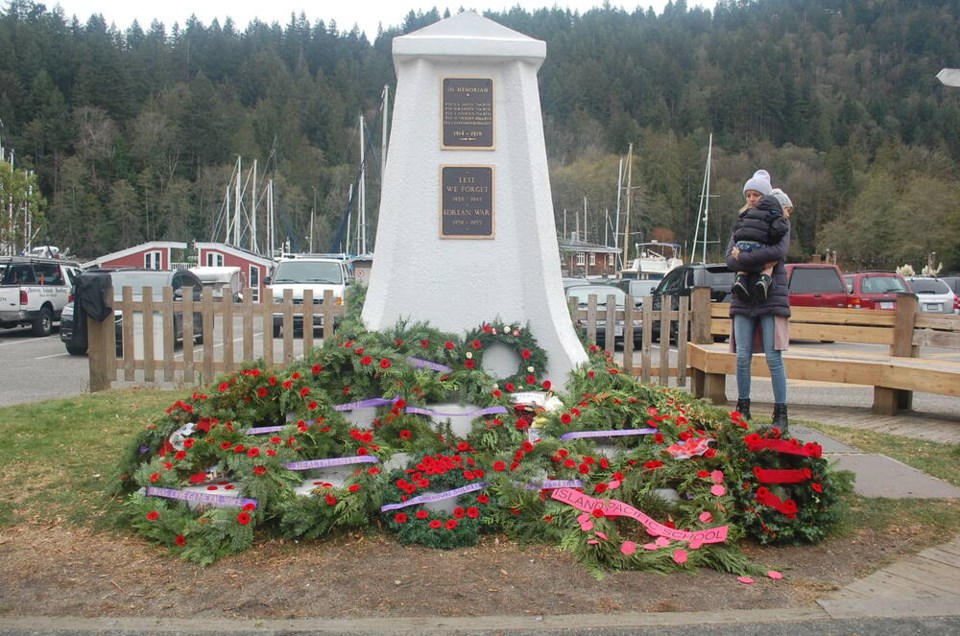Perched in Snug Cove, along the high-traffic path to and from the hourly loadings at the ferry terminal, the Cenotaph has become enmeshed in the buzz of daily life and social relations on Bowen.
It is a place where things are lost and found: a black leatherette Kodak Camera case in December 2007, and a pair of prescription glasses just the year before. It is a site of activity: like how in 1947, a flag was stolen from the memorial, promptly replaced, then stolen again, or 1985 when a concert took place near the cenotaph for Canada Day.
Even in the summer, it was sitting in full view from the hot dog and burger stand just 10 steps away on the wharf, a flash of white in the corner of my eye while in conversation with Jeff, stand keeper and cook.
What was originally built as a public site for the community to remember and pay tribute to soldiers who were never able to return home, over the decades, the cenotaph has also come to blend into the periphery of Bowen’s landscape. It stands, stock-still against the everyday flow of foot and car traffic, into and out of the marina parking lot or Bowen itself. But every year on November 11 the Cenotaph comes back into focus and reifies Bowen’s sense of community.
In 1937 a dedication ceremony took place in Snug Cove to mark the opening of the new Cenotaph. Donated by members of Bowen Island’s Legion, Branch 150, the monument commemorates the five Bowen veterans killed in the Great War: Lewen Tugwell, Charles Redmond, Cameron Smith, Miles Green, and Norman Vickery. Inscribing the names of the fallen in a way that is local, public and visible. Keeping present in our minds that the large-scale destruction wrought by war is made up of an assemblage of direct personal losses — in big nations and large powerful empires, to a quiet island in the middle of Howe Sound with a population of 90.
The Cenotaph remains a standing presence of the island’s intimate history with war since it was erected 63 years ago. The cenotaph was built by the hands of local people: the structure formed from an old army cot by Cameron Smith’s uncle, William Linklater Smith; concrete mixed by James Collins with the help of other community members; pennies thrown into concrete by Cal Frost as it poured. When the Cenotaph, fenced and with an evergreen tree at each corner of the monument, was moved 25 yards down from its original spot by the water to dredge for the new marina, it was local hands who made it so.



